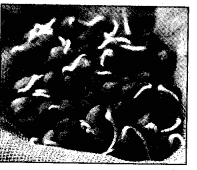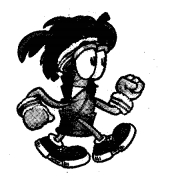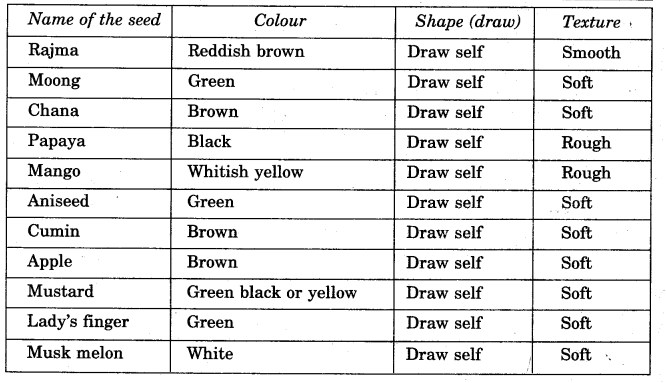NCERT Solutions for Class 5 EVS Chapter 5 Seeds And Seeds
1.What things are soaked before cooking in your house? Why? .
Ans. Following things are soaked before cooking:
Chana, moong, dry pea, rajma, soyabean, pulses, rice, etc.
These things become soft after soaking. This makes it easier to grind them and to cook them. This helps in saying time and energy. .
2.What things do you eat after sprouting? How are they sprouted? How much time does it take?
Ans. We eat chana, moong, etc. after sprouting. They Eire soakedin water overnight. Then the water is drained out and they are kept in a basket or suspended in a cloth so that they can get air.
Chana takes about 36-48 hours to sprout, while moong takes about 24-36 hours.
3.Has the doctor or someone you know ever told you to eat sprouts? Why?
Ans. Yes, doctor has advised me to eat sprouts because they are very nutritious.
Do This and Find Out
1.Do you remember that in Class IV you did an activity with seeds? Now try another one.
• Take some chana and three bowls.
• Put five chana in the first bowl and fill it up with water.
• Put a damp piece of cloth or some cotton wool in the second bowl. Now keep the same number of chanas in it. Make sure that the cotton wool or cloth remains wet.
• Put the same number of chanas in the third bowl. Do not put anything else in it. Cover edl the three bowls.
Observe Eifter two days and note the changes in the bowls.
Ans.

Tell and Write
1.In which bowl did the seeds sprout? What difference did you see between this bowl Eind the other bowls?
Ans. Seeds could sprout in bowl 2 only. In the bowl 2, the seeds got both air and water Eind hence could sprout. On the other hand, in bowl 1, only water was available and hence the seeds could not sprout. In the bowl 3, there was no water and no air and hence seeds could not sprout.
2.Why did Gopal’s mother tie the chana in a damp cloth?
Ans. Gopal’s mother tied the chana in damp cloth so that seeds could get both water and air.
3.When you split the whole masoor, you get me—masoor dal. But then you cannot sprout me! Can you think why?
Ans. This happens because the sprouting capacity of masoor is lost after it is split.
Draw
1.Look carefully at your sprouted chana and make its drawing.
Ans.
Project: Plant Your Seeds
1.Take a clay pot or a tin can with a wide mouth. Make a small hole at the bottom of the can. Fill your can with soil. Put four or five seeds of the same kind in the soil and press them gently. Different groups can plant different kinds of seeds, such as mustard (sarson), fenugreek (methi), sesame (til) or coriander (dhania).
Ans. For self attempt.
Write
1.Name of the seed:……………………..
The date on which you planted them:……………………………..
The day you observe something coming out of the soil, start filling the table:
Ans. Name of the seed: Mustard (sarson)
The date on which you planted them: 2nd October, 2012
The day you observe something coming out of the soil, start filling the table:
Find Out
1.How long did it take for the plant to come out from the soil?
Ans. It took about a week for the plant to come out from the soil.
2.What was the difference in the height of the plant on the first and second day?
Ans. The height increased by about half a centimetre.
3.On which day did the height of the plant increase the most?
Ans. On the third day the height of the plant increased the most.
4.Did new leaves come out of the plant every day?
Ans. Yes, new leaves came out of the plant every day.
5.Was there any change in the stem of the plant?
Ans. Yes, the stem became thicker and thicker by each day.
Discuss
1.Which seeds took the most number of days for the stem to come out of the soil?
Ans. Seeds of sesame (til).
2.Which seeds took the least days to come out of the soil?
Ans. Seeds of mustard (sarson).
3.Which seed did not grow at all? Why?
Ans. All seeds grow well in the presence of water and air. If either of these two factors is absent then the seed cannot grow.
4.Did anyone’s plant dry up or turn yellow? Why did this happen?
Ans. Yes, some students’ plants dried up or turned yellow. This happened because proper amount of water and/or air was not provided.
5.What would happen if the plants do not get water?
Ans. They would turn yellow or even dry up.
Straight from Your Heart
1.What is inside the seed?
Ans. Inside the seed, thefe are cotyledons and embryo. –
2.How does a big plant grow from a tiny seed?
Ans. The seed germinates to produce a seedling. The seedling absorbs water and nutrients from the ground and grows into a big plant.
Think and Imagine
1.What would happen if plants could walk? Draw a picture.
Ans. See adjoining figure.
Find Out
1.Do some plants grow without seeds?
Ans. Yes, same plants grow without seeds.
So many seeds!
1.How many types of seeds can you collect? Where will you find them? Each of you should try to collect as many different types of seeds as you can. After that, put all the seed collections together. Now observe these seeds carefully—their shapes, sizes, colour, textures (smooth or rough). Make a seed chart to put up in the class. You can start with a table like this.
Ans.
Think
1.Did you keep aniseed (saunf) and cumin (jeera) in your list?
Ans. Aniseed and cumin seeds were also taken in the list.
2.Which was the smallest seed and which was the biggest seed in your collection?
Ans. Cumin was the smallest seed and mango was the largest seed in my collection.
Make Lists of
1.Seeds that are used as spices in your home.
Ans. Cumin, mustard, aniseed, etc.
2.Seeds of vegetables.
Ans. Lady’s finger, tomato, cucumber, etc.
3.Seeds of fruits.
Ans. Apple, orange, guava, apple, etc.
4.Light seeds (check by blowing them).
Ans. Cumin (jeera), aniseed (saunf).
5.Seeds which are flat.
Ans. Rajma, apple, cumin, aniseed, sesame, etc.
6.Make more groups. How many groups of seeds did you make?
Ans. Seeds can be grouped as follows:
(a) Edible seeds (b) Seeds which give oil
(c) Seeds used as spices (d) Seeds floating on water
(e) Seeds sinking in water (f) Very small seeds
(g) Very big seeds.
7.Do you know any games that you can play with seeds? Discuss with your friends.
Ans. Tamarind seeds are split into two halves and children play a game with them. Mango seeds are used to make a type of flute.
8.Have you ever seen any seed that can fly?
Ans. Yes, I have seen such seeds. It has white hairs attached to it.
9.What is it called in your area?
Ans. Budhiya ke baal (Old woman’s hairs).
10.Look at your seed collection. Guess how many of those could have travelled by flying?
Ans. I think some of them could travel by flying, e.g. cumin and aniseed.
11.Did you get any new idea from these seeds?
Ans. Yes, these seeds can also be used for decorating something.
12.Look at the pictures given below and guess how the seeds travel and reach different places.
Ans. The first picture shows a squirrel carrying a seed and the second picture shows a bird carrying a seed. These two pictures suggest that seeds travel with the help of animals.
The third picture shows seeds floating on water. This suggests that seeds travel through water.
13.Some plants spread their seeds over long distances. When the soyabean pods are ripe, they burst and the seeds are thrown out. Have you ever heard their sound?
Ans. No, I have not heard their sound.
14.Think what would happen, if seeds did not spread and remained at one place only?
Ans. If seeds would not spread and would remain at one place only, there can be many problems for those seeds. All the seeds would fall near the parent tree. This will prevent those seeds from getting enough sunlight, air and water. As
a result, most of the seeds would fail to germinate. New saplings, growing under a tree would not grow properly.
15.Make a list of the different ways by which seeds are spread.
Ans. Seeds are spread by following agents: –
(а) Animals (6) Humans (c)Air (d) Water.
16. What all was grown in India long ago? Were mangoes and bananas grown here? What came from other countries? Imagine food without potatoes or tomatoes!
Ans. In India, many crops like tea, mango, orange, radish, methi, spinach, etc. were grown long ago. Yes, mangoes and bananas were grown here.
Tomato and potatoes, chillies, coffee, etc. have come from other countries. We cannot imagine a proper vegetable curiy without tomato. Potato is used in most of the dishes. Such dishes would not be possible without potatoes and tomatoes.
What We Have Learnt
1.Reena has drawn this picture of the seed sprouted by her. What do you think the seeds need for sprouting? Write in your own words. How would Reena’s seeds look if they did not get the things needed? Show by drawing a picture.
Ans. Water and air are required for germination of seeds. The seeds
would not show changes in the absence of water and air.
2.How do seeds spread to far off places? Write in your own words.
Ans. (a) Seeds are spread by birds, animals, air and water. Many animals eat a fruit
and throw the seeds. Thus these animals help in spreading seeds.
(b) Some seeds stick to the fur of animals and thus are transported to other places.
(c) Some seeds have thin hairs and are lightweight. These seeds float on air and travel to other places.
(d) Some seeds float on water and thus travel to far off places.